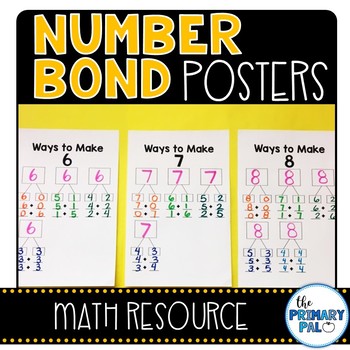Number Bond Posters
- PDF
Description
These posters offer students a visual reference tool to solidify their understandings of how numbers go together.I use them in my classroom after my students engage in activities that support their developmental understandings of decomposing numbers. I fill in the parts of each number bond and write the corresponding expressions with my students as a whole group debrief at the end of my lessons.
The posters are formatted to be printed on ledger size paper (11 x 17), however you can easily shrink them using your printer properties to print on regular 8.5 x 11 paper.
Checkout more bestselling resources:
First Grade Daily Math Practice: Year Long Bundle
First Grade Math Vocabulary Bundle
Math Fact Fluency: Addition and Subtraction 0-5
Math Fact Fluency: Addition and Subtraction 6-10
Be sure to visit and follow my store for product updates and freebies!



